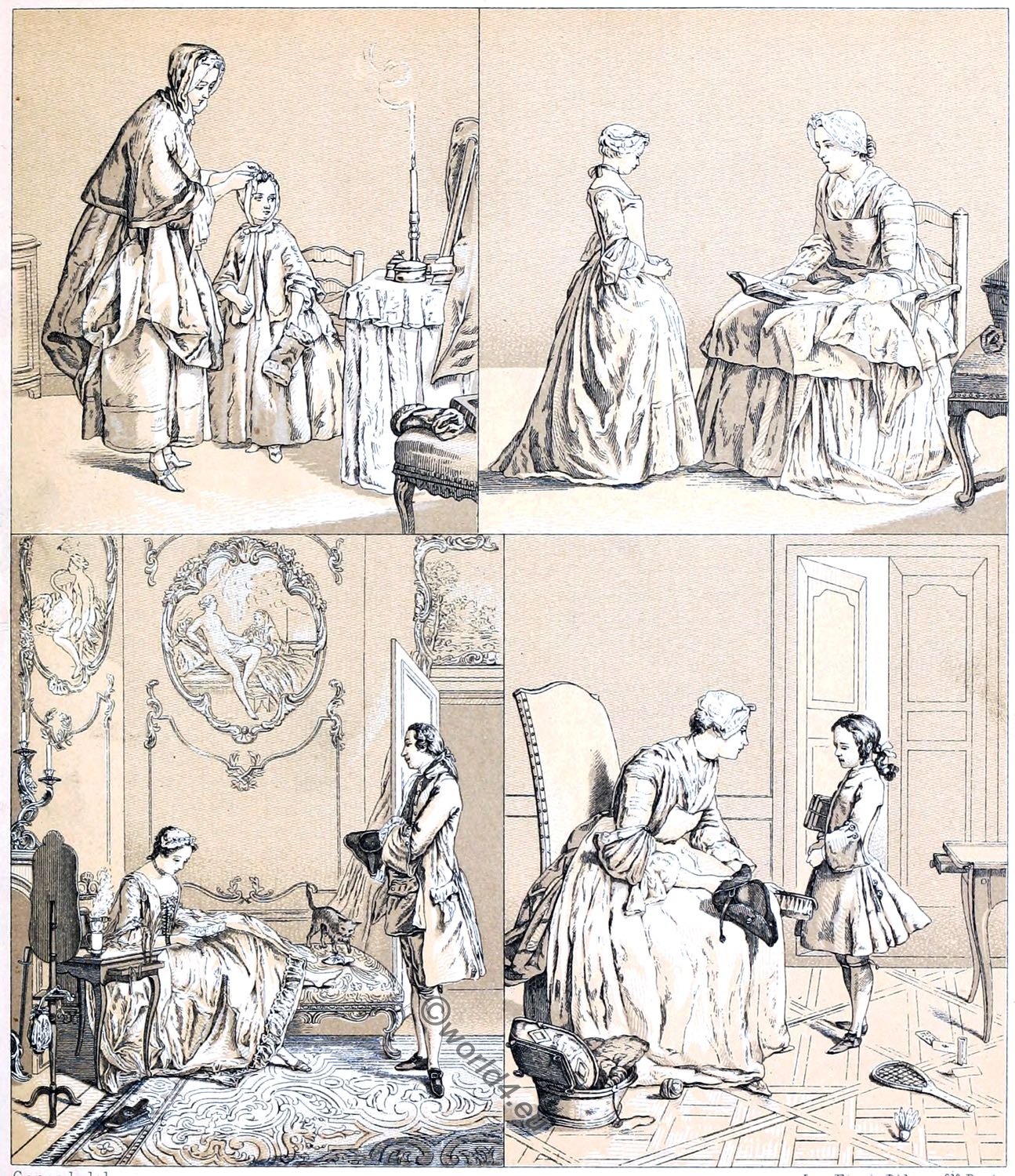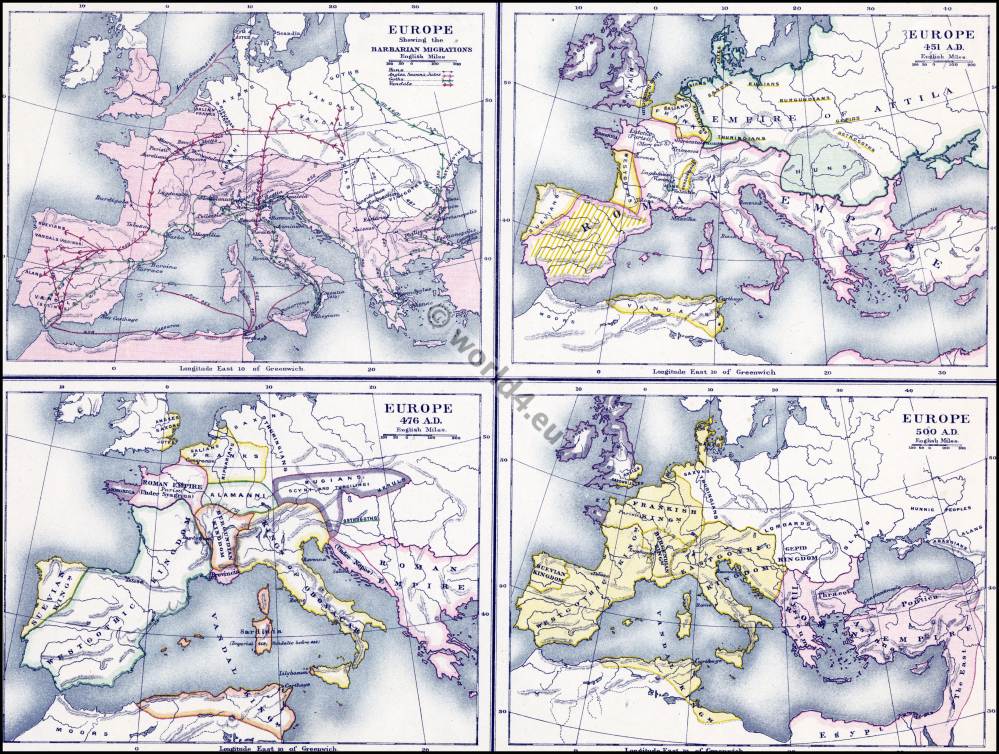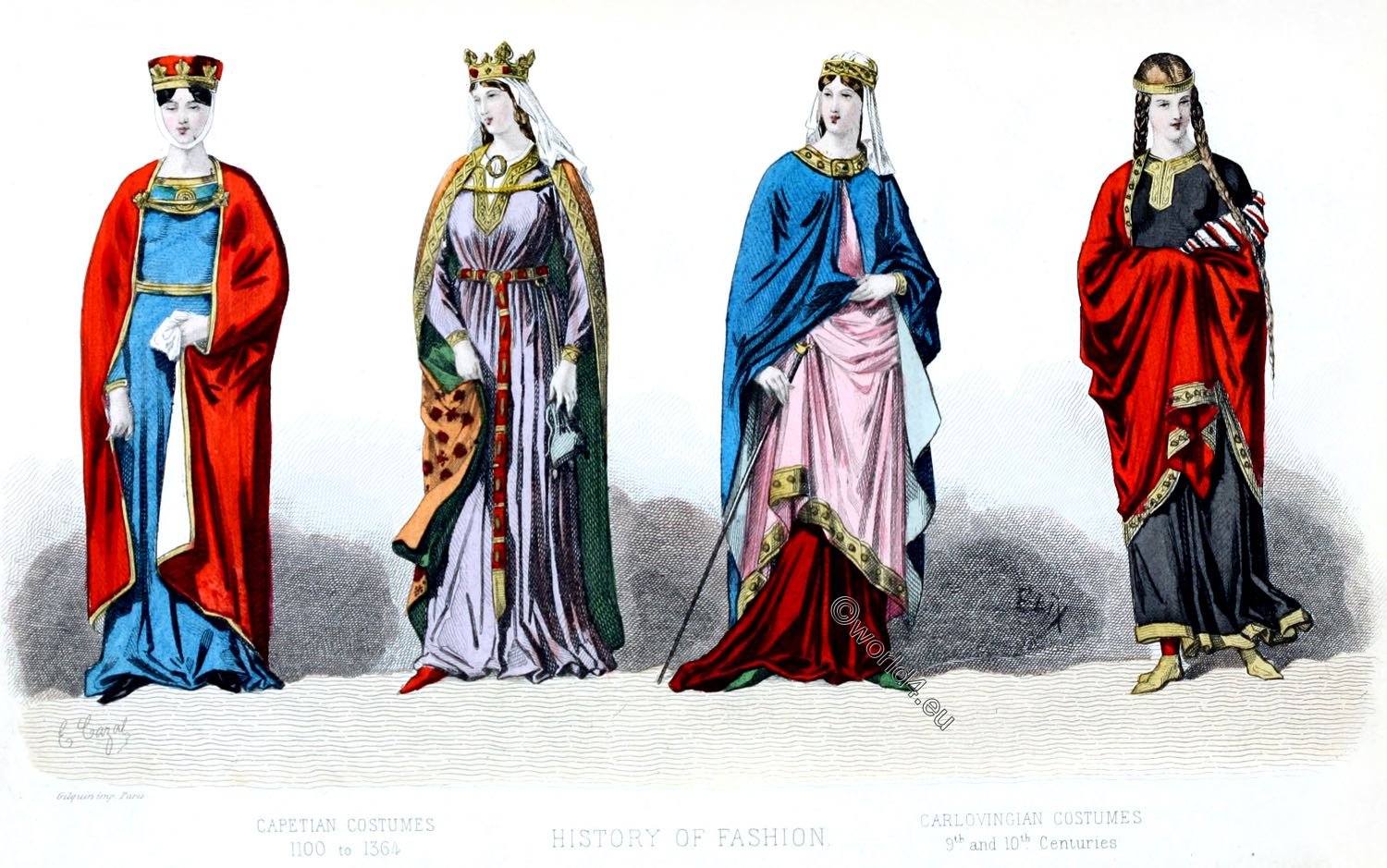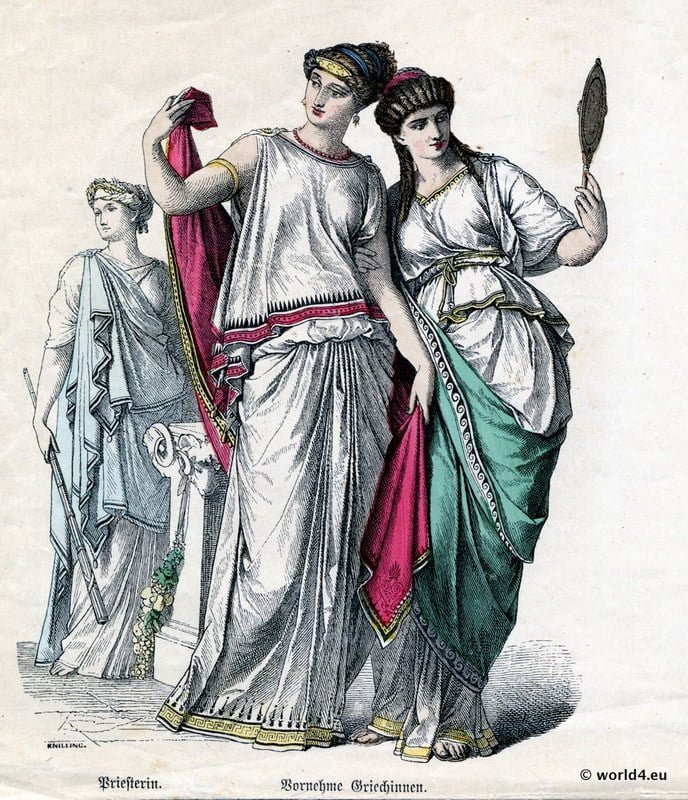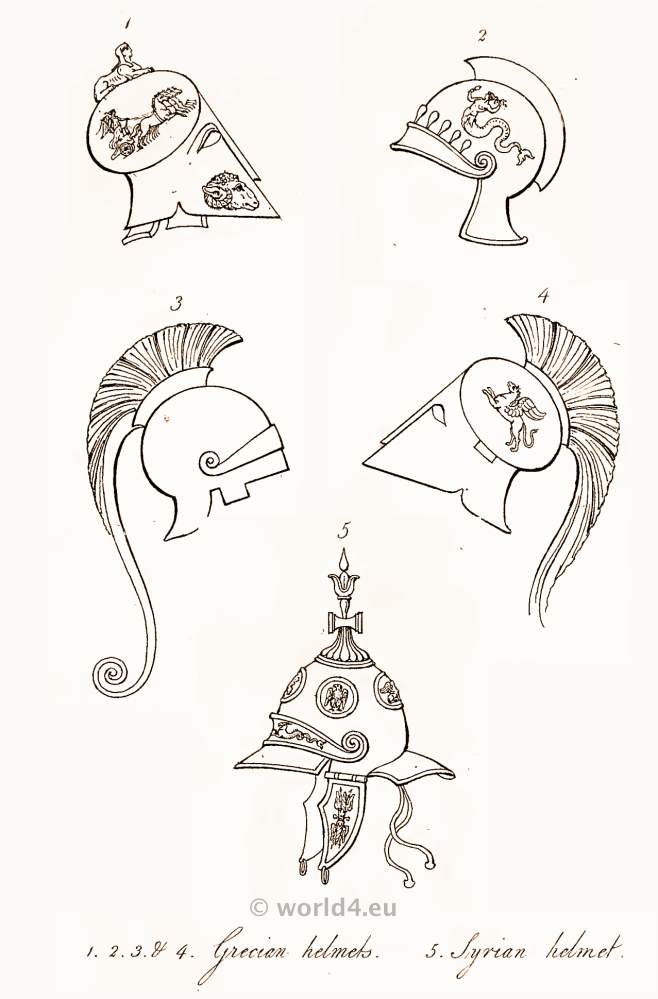THE GRECIAN SILHOUETTE
In the figure we see the silhouette of that costume which forms our ideal of proportion and grace of line. The Grecian chiton, or dress, of the Classical period, falling from the shoulders to the feet and held in at the waist or just below the bust, by a cord or girdle, allowed the utmost freedom of motion to the body.
In this particular it was a marked contrast to the sheath-like garment of the Egyptians. The top of the rectangular piece composing this garment was folded down about a foot or more from the point of attachment at the shoulders, and fell in soft, graceful cascades on the sides from the shoulders to the hips.
The material used by the Grecians in their chitons was at first usually of wool or linen, silk having been introduced from the Orient and worn in the later historical period; soft, sometimes crepe-like in texture, the fabric added its share to the long, graceful folds which we see represented in the old Greek statues.
The coiffure of the Grecian woman followed the contour of the head, the hair being usually parted, drawn back from the face, and fastened in a knot at the back of the head.
Fillets were frequently wound several times around the head, or these were replaced by the splendone, a band of ornamental cloth or leather, and by hair nets, all helping to keep the profile simple and natural.
As the Grecian woman wore no hat during her rather infrequent journeys from home a sheer, thin veil of cotton, or a fold of her mantle formed a protection for her head and face.
QUESTIONS
- Why is it that the costume of the Grecian woman is considered the best in design of all the types of costumes which have been developed throughout the ages?
- Collect clippings of modern dresses which have sleeves showing suggestions of Grecian drapery.
- Which materials in fashion today lend themselves to the soft drapery mentioned above?
- Find a picture of “The Porch of the Maidens” in a geography, history, or history of art text-book and try to drape on yourself the dress or chiton represented.
Source: Costume silhouettes by Mary Evans. Philadelphia, J.B. Lippincott Company 1923.
[wpucv_list id=”136457″ title=”Classic grid with thumbs 2″]Continuing
Discover more from World4 Costume Culture History
Subscribe to get the latest posts sent to your email.


